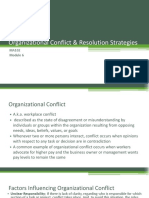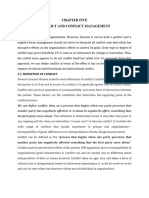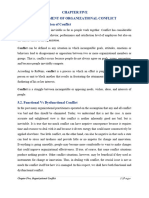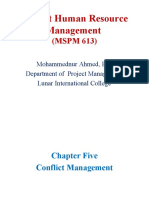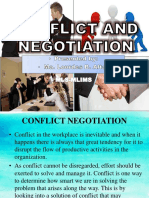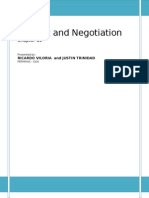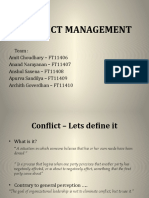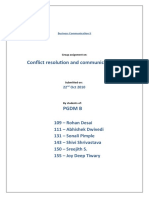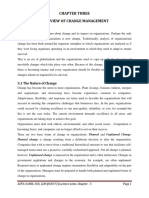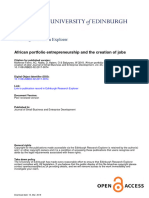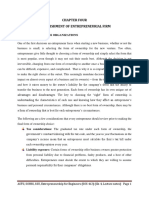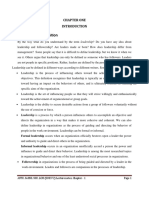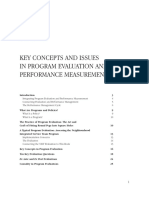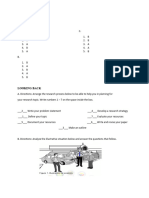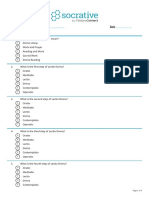0% found this document useful (1 vote)
151 views14 pagesChapter 4-Notes
This chapter discusses conflict, the conflict process, and methods for effectively handling conflict such as negotiation and bargaining. It defines conflict as a process that begins when one party perceives another has negatively affected something they care about. There are three views of conflict in organizations discussed: the traditional view sees all conflict as harmful, the human relations view sees conflict as natural and inevitable, and the interactionist view encourages some conflict as it can improve group performance. The chapter examines types of conflict including task, relationship, and process conflict and how they can be either functional or dysfunctional. It also outlines structural and personal factors that can cause conflict in organizations, such as specialization, interdependence, goal differences, and individual personalities, skills, and perceptions.
Uploaded by
Mesay BarekewCopyright
© © All Rights Reserved
We take content rights seriously. If you suspect this is your content, claim it here.
Available Formats
Download as PDF, TXT or read online on Scribd
0% found this document useful (1 vote)
151 views14 pagesChapter 4-Notes
This chapter discusses conflict, the conflict process, and methods for effectively handling conflict such as negotiation and bargaining. It defines conflict as a process that begins when one party perceives another has negatively affected something they care about. There are three views of conflict in organizations discussed: the traditional view sees all conflict as harmful, the human relations view sees conflict as natural and inevitable, and the interactionist view encourages some conflict as it can improve group performance. The chapter examines types of conflict including task, relationship, and process conflict and how they can be either functional or dysfunctional. It also outlines structural and personal factors that can cause conflict in organizations, such as specialization, interdependence, goal differences, and individual personalities, skills, and perceptions.
Uploaded by
Mesay BarekewCopyright
© © All Rights Reserved
We take content rights seriously. If you suspect this is your content, claim it here.
Available Formats
Download as PDF, TXT or read online on Scribd
/ 14











